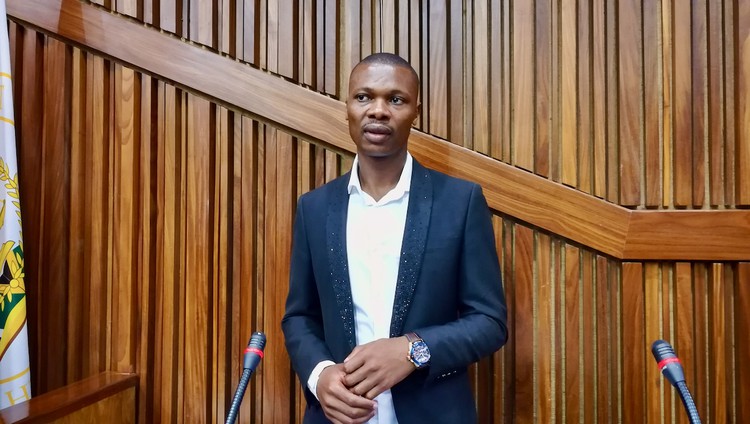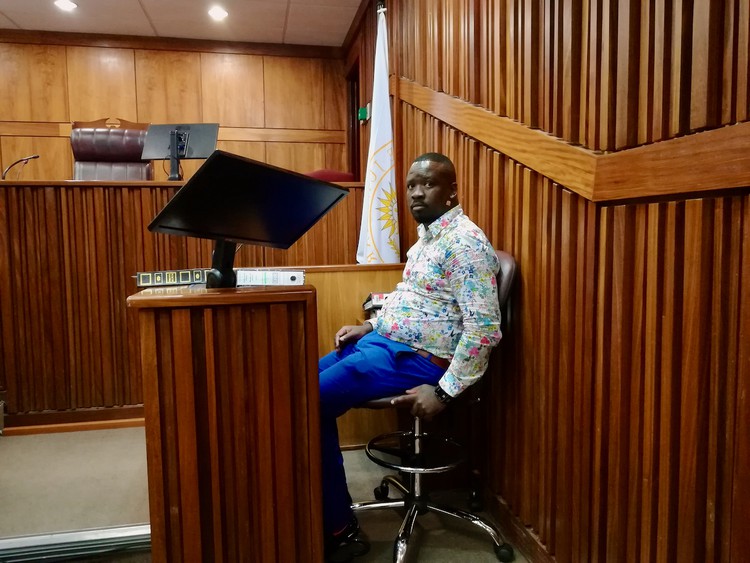Prisoners were tortured at Leeuwkop prison, court finds
Minister of Justice and Correctional Services is 100% liable to pay damages
Illustration: Lisa Nelson
- Prisoners were tortured by guards at Leeuwkop prison, the Johannesburg High Court has ruled.
- The Minister of Justice and Correctional Services is 100% liable for whatever damages the five prisoners can prove.
- Judge Ellem Francis said that the officials’ claims that they were under attack by the prisoners was a “pack of lies”.
The Johannesburg High Court has ruled that the Minister of Justice and Correctional Services is 100% liable to pay damages to inmates at Leeuwkop Correctional Centre who had been tortured by prison guards.
The application before Judge Ellem Francis was brought by five inmates who alleged they had been subjected to extensive physical and psychological abuse. The plaintiffs are Llewellyn Smith, Xolani Zulu, Benson Qibi, Abel Phasha and Mthokozisi Sithole.
The minister denied this and the judge said he had to decide which version was the truth.
In his ruling handed down on Thursday, Judge Francis said the fact that the complainants were convicted criminals did not prevent them from being treated as human beings.
“The fact that the perpetrators are high ranking officials does not give them the licence to do as they please,” he said.
In their first claim (Claim A), the prisoners alleged they had been assaulted and tortured on 10 August 2014 in the vicinity of cell B1.
A second claim (Claim B) related to alleged unlawful and wrongful detention of four of them in isolation from 10 to 26 August that year.
The minister denied liability.
In respect of Claim A, he said officials had applied the necessary proportionate minimum force to defend themselves after objects and human faeces were hurled at them and the prisoners refused to leave the cell.
In respect of Claim B, the minister said the segregation of the prisoners was lawful.
Dealing with the applicable legislation, Judge Francis noted that the Torture Act criminalised torture and aimed to give effect to South Africa’s international treaty obligations.
The judge said three days prior to 10 August, officials conducted a surprise search of cell B1 but could not open the door, because it had been blocked from the inside with toothbrushes in the locking device.
A cell cleaner unblocked the door, but none of the inmates took responsibility for it.
The repercussions were that they were “demoted”, their television was removed and individual privileges revoked.
They were aggrieved and tried to appeal this but received no response from prison bosses.
On the morning of 10 August, one of the inmates again blocked the lock on the cell door as a “form of protest”.
Witnesses for the minister said the officials attempted to negotiate with the inmates. One used an electric grinder to cut open the main door. Officials were then attacked with buckets, electric kettles, electric irons, brooms and faeces.
They were compelled to use T-batons and non-electrified shields for protection to take control of the cell.
The prisoners, however, said this was not true. They denied throwing any objects and said once the cell door was opened, they were instructed to exit, and they did so peacefully.
Tortured
The inmates testified that they were shocked, kicked, beaten with open hands and batons as they were coming into the courtyard.
They said they felt like they were going to die.
They said they could hear their fellow inmates screaming. The officials were putting them on top of each other in a pile, like bags of cement.
One inmate said he was taken to an office where he was kick-boxed by an official and made to do handstands. Each time he fell, he would be given electric shocks. This continued for about 15 minutes.
At one stage, an official, “a big man”, instructed them to lie on their stomachs and he had walked on the back of their necks.
All testified that they had been brutally assaulted and tortured for a sustained period of time.
Those who were placed in segregation told of the dire, inhumane conditions they were subjected to.
They were restrained with ankle cuffs for 23 hours a day. Beds and mattresses had been removed; the blankets were wet.
An independent doctor, who examined four of the five inmates, said they ought to have been hospitalised and x-rays taken, and those with head injuries ought to have received CT and other scans to check for internal injuries.
A psychiatrist examined all five and said they were all suffering from PTSD and other psychological disorders.
“Pack of lies”
Judge Frances said the minister, as defendant, bore the onus to prove the inmates had hurled objects at them which necessitated prison officials to defend themselves.
But, he said, the evidence of the defendant’s witnesses was so riddled with material gaps and inconsistencies “with no coherent version” about what happened that morning or how the prisoners were injured.
“The version about an attack on officials by inmates was a thought-out version manufactured later to deal with the case around assault and torture. The missiles allegedly thrown changed dramatically over time depending on which official was testifying,” he said.
There were also three documents recording the events of that day and none mentioned an attack on officials.
The first report of an alleged attack was in September when the officials involved had to make statements for an internal investigation, inconceivable given the “horrifying and terrifying experience” the officials claimed to have suffered.
Had the prisoners launched such an attack, it would have been expected that they would have been charged and disciplined, Judge Francis said.
“The attack simply did not happen, and I can find no conceivable justification for the conduct of the officials,” he said.
He said there was no credible evidence to contradict the prisoners’ version about how they were assaulted and sustained injuries.
Judge Francis said the evidence showed that the officials did have electric shields on that day.
On the issue of segregation, the judge said it was clear that officials had not followed the procedures and rules, that it was unlawful, and that the conditions were inhumane.
They were also not properly examined for injuries or treated for injuries while they were segregated. Inadequate record-keeping was “an attempt to conceal the true nature and extent of the assault on them”.
Judge Francis said he was satisfied that the severity of their injuries – physical and psychological – had been established.
“It is rather sad and disturbing that some of the events that took place during the dark days of apartheid continues to take place,” he said.
He said the story of the attack by the inmates on the prison officials had been “concocted” and was a “pack of lies”.
“The assaults that were inflicted on them rose to the level of torture, as defined by the Act. They were assaulted in order to solicit information about who was in possession of illicit cellphones and who had blocked the door to the cell.”
He said the assault on four of the five continued when they were placed in isolated segregation, unlawfully and in inhumane conditions for 16 days, shackled for 23 hours a day, and denied adequate medical care and treatment.
The judge found the minister to be 100% liable for damages. The amount is still to be determined through either negotiation or at another trial.
The minister was ordered to pay the costs of the application.
Nabeelah Mia, head of the penal reform programme at Lawyers for Human Rights, which along with law firm Webber Wentzel acted for the prisoners, said, “Our clients’ rights have been vindicated. They are ecstatic with the result. This judgment gives effect to the principle that human rights are universal, and all persons are entitled to dignity and to be free from torture.”
Mthokozisi Sithole, fifth palintiff, when he was cross-examined about his evidence in the Johannesburg High Court in November 2019. Archive photo: Zoë Postman
Xolani Zulu, second plaintiff, when he testified in the Johannesburg High Court in November 2019 that he was assaulted by prison officials at Leeuwkop Maximum Correctional Centre. Archive photo: Zoë Postman
Support independent journalism
Donate using Payfast

© 2023 GroundUp. This article is licensed under a Creative Commons Attribution-NoDerivatives 4.0 International License.
You may republish this article, so long as you credit the authors and GroundUp, and do not change the text. Please include a link back to the original article.
We put an invisible pixel in the article so that we can count traffic to republishers. All analytics tools are solely on our servers. We do not give our logs to any third party. Logs are deleted after two weeks. We do not use any IP address identifying information except to count regional traffic. We are solely interested in counting hits, not tracking users. If you republish, please do not delete the invisible pixel.



